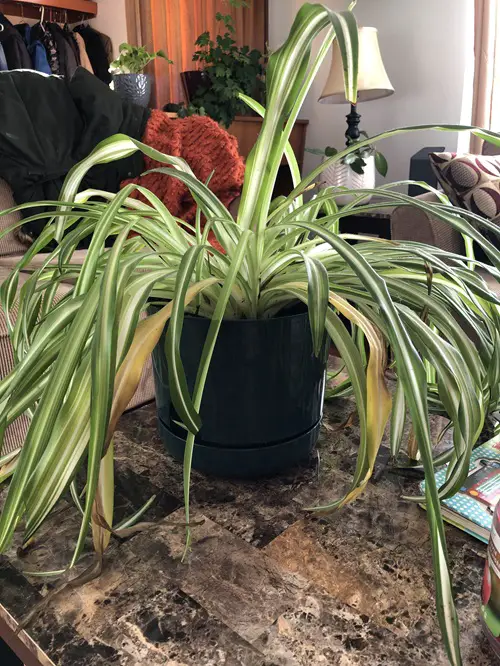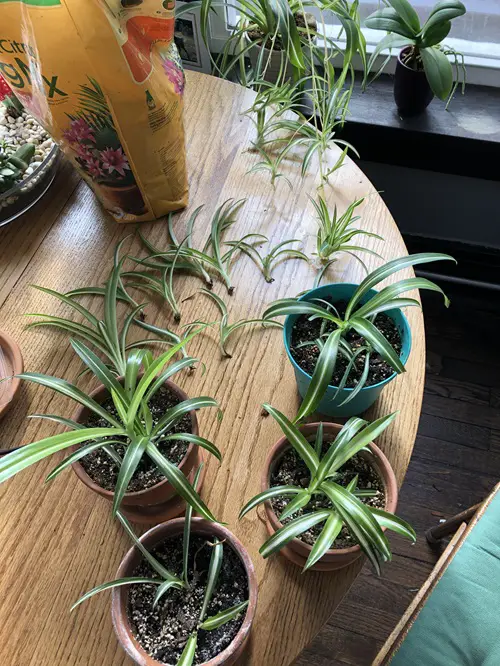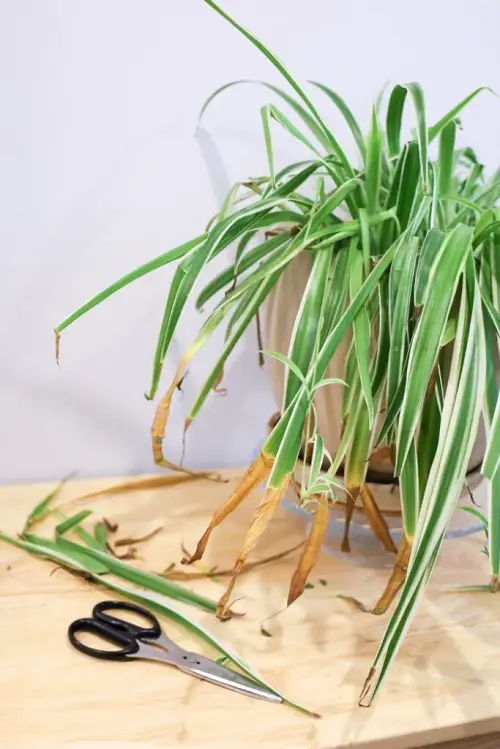This resilient houseplant thrives fuss-free, but an occasional nip and tuck can help it grow healthy—here’s How to Prune a Spider Plant!

Chlorophytum comosum is a fast-growing indoor foliage beauty that can either grow too much too soon or get leggy and misshapen due to various factors. So what do you do? We show you how to prune your spider plant so it grows better, bushier, and happier!
Why Prune a Spider Plant?
A spider plant looks its best when its slender, variegated leaves cascade evenly from the center. But often, it becomes unmanageable, large, floppy, and lopsided with brown tips. Damaged and yellowing leaves also take up unwanted space and resources!
Pruning helps with all this and more! A healthy spider plant forms plenty of plantlets—also known as pups and spiderettes—which can be turned into entirely new plants. These offshoots grow at the end of long stems; snip away and replant them in soil or water.
Another reason to prune is to maintain a good airflow and keep it pest-free. Native to South Africa, these coastal perennials can get quite dense, offering humid, warm breeding grounds for common pests! So, the next question is when to prune the spider plant.
When to Prune Your Spider Plant?
If you look at it, pruning is an injury that beckons healing—you are cutting the plant, after all! Since the plant needs rest and energy to heal after pruning, remember to do so at the start of its growing season during spring and summer and always lightly.
Ideally, the best time to prune is in spring. Later, the plant starts to produce flowering stems and spiderettes, and removing these flowering stems can hamper the production of your baby spider plants.
For regions with mild winters, you can also prune in early fall in the first two weeks of September, but avoid pruning your spider plant in late fall or winter during the inactive growth phase, especially if you’re not from a frost-free climate. This is when the plant conserves energy to survive and last the cold, not heal wounds!
How to Prune a Spider Plant?
1. Inspect the Plant

The first step is to inspect your plant thoroughly. Prune only if needed—when you see old, dead leaves, yellowing tips, and signs of deformities. And then target just those bits. If your plant is growing haphazardly or is too dense, this is also a sign to thin out the noise.
If your spider plant leaves are splitting and breaking, read this article to discover why and how to prevent it. In the case of a big spider plant, don’t reduce the mother plant by pruning; instead, divide it and have more copies.
2. Trimming Process
It’s prune time—take a pair of hygienic, sharp shears or scissors and snip the leaves cleanly and quickly. It is better to cut back the tips of healthy leaves rather than chopping them whole, and remember not to prune more than a third of your plant at a time!
Excessive trimming can stress the plant, making healing difficult and leaving more openings for infections.
3. Replant your Spider Pups

If you see any flowering stems, don’t trim them and wait for baby spider plants to appear. For spiderettes that are already there on your plant, consider yourself lucky! Pick a few robust pups and gently clip them from the mother plant.
For a bushy appearance, replant them in the same pot as the parent, as these will quickly grow and fill the pot better. If you like, plant them in small new pots, and you can also let them root in water.
If your spider plants aren’t producing pups, check out this article for reasons and solutions!
4. Pruning for Bushier Growth

Speaking of bushy, you can get your spider plant to fountain outwards abundantly by pruning it at the base at a 45° angle; remove longer and older stems from their base, cutting near the crown of the plant.
This keeps the cuts clean, helps it heal faster, and prompts rich new growth. Here are some more ways to get a bushy spider plant.
Post Pruning Care
- Remember to water your spider plant amply so it receives enough hydration to recover. Spider plants are sensitive to chemicals or excess minerals, which can cause leaf burn. We recommend using distilled water, especially after pruning.
- For optimal growth, spider plants need the perfect balance of sunlight and shade. Keep them in a spot with dappled sunshine and temperatures always over 45 F (7 C). Read this article on the best places and ways to keep your spider plant.
- During its growing period, nourish your spider plant with a nitrogen-based soluble fertilizer diluted to half its strength. This process can be repeated every 3-4 weeks in the growing season for healthy foliage.
Remember these things when you prune your spider plant, and it will grow better!



